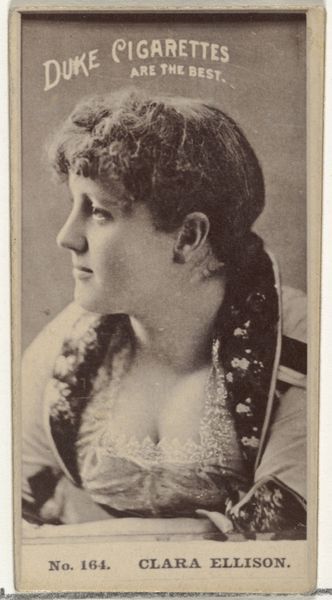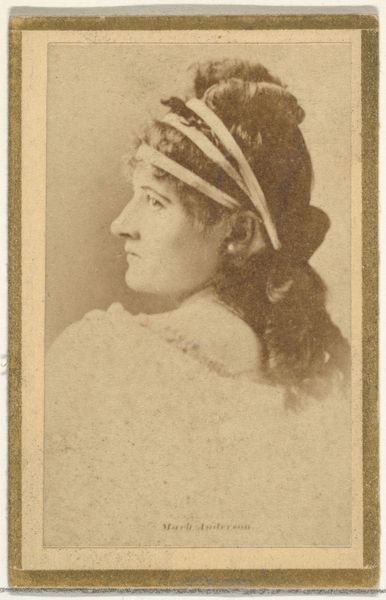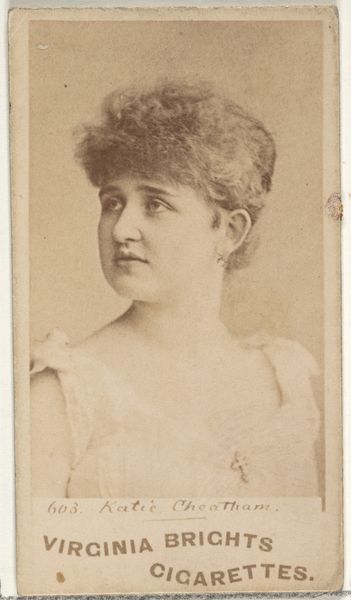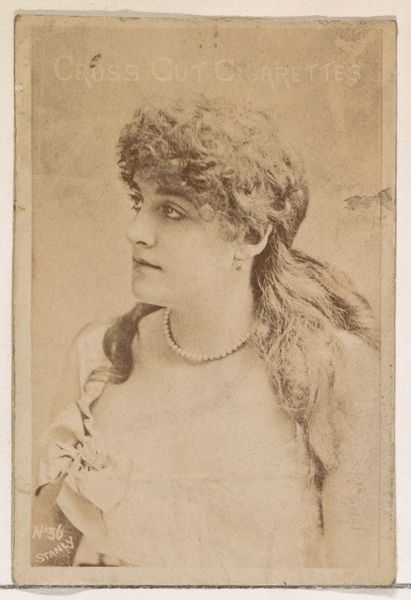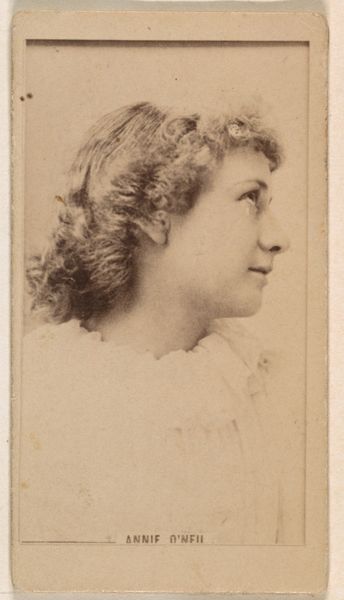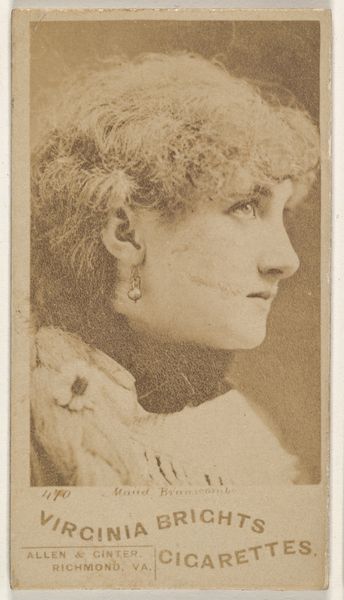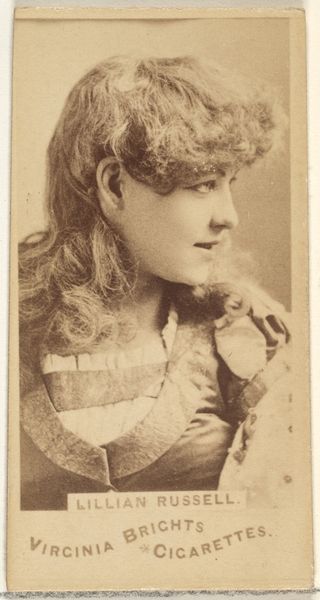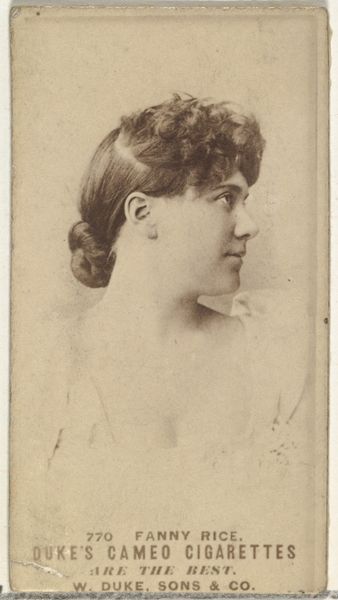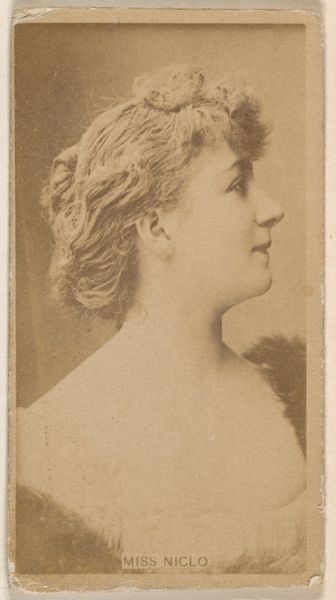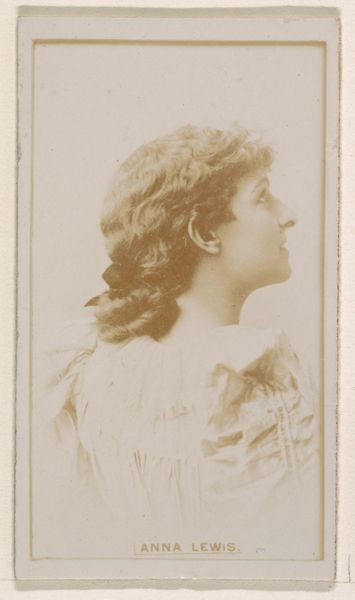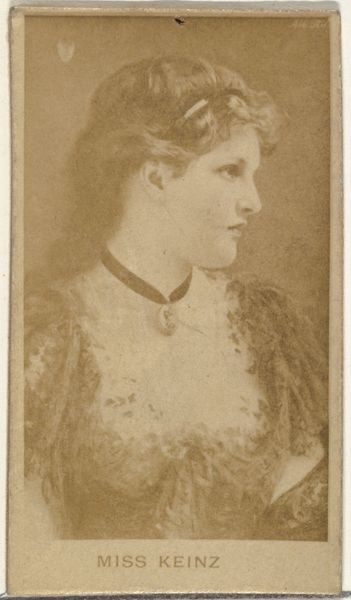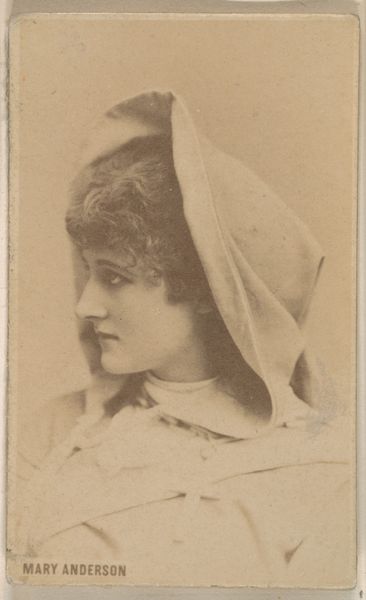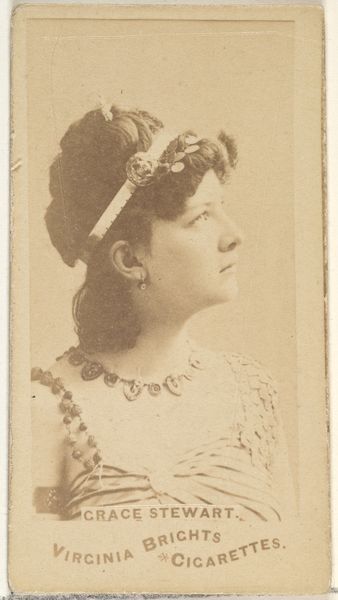![[Actress in profile wearing ornamental headpiece], from the Actors and Actresses series (N145-8) issued by Duke Sons & Co. to promote Duke Cigarettes by W. Duke, Sons & Co.](/_next/image?url=https%3A%2F%2Fd2w8kbdekdi1gv.cloudfront.net%2FeyJidWNrZXQiOiAiYXJ0ZXJhLWltYWdlcy1idWNrZXQiLCAia2V5IjogImFydHdvcmtzLzU2YTQzOGYzLTFhODAtNGIxNi05NzM2LWNjZmI5ZTA3NDNkNy81NmE0MzhmMy0xYTgwLTRiMTYtOTczNi1jY2ZiOWUwNzQzZDdfZnVsbC5qcGciLCAiZWRpdHMiOiB7InJlc2l6ZSI6IHsid2lkdGgiOiAxOTIwLCAiaGVpZ2h0IjogMTkyMCwgImZpdCI6ICJpbnNpZGUifX19&w=3840&q=75)
[Actress in profile wearing ornamental headpiece], from the Actors and Actresses series (N145-8) issued by Duke Sons & Co. to promote Duke Cigarettes 1890 - 1895
0:00
0:00
drawing, print, photography
#
portrait
#
drawing
# print
#
photography
Dimensions: Sheet: 2 11/16 × 1 3/8 in. (6.8 × 3.5 cm)
Copyright: Public Domain
Editor: Here we have an intriguing albumen silver print from Duke Sons & Co., sometime between 1890 and 1895. It’s part of a series called "Actors and Actresses," depicting an actress in profile with a very ornate headpiece. I'm struck by the objectification in this portrait; how was this received by the audience? Curator: That's a perceptive observation. It's vital to consider this image within its socio-historical context. These were cigarette cards, essentially marketing tools. So, how does it shift your perspective knowing that a corporation was not only marketing its products, but also promoting certain types of images and, by extension, ideals of beauty and fame during this time? Do you see any relationship between the woman's identity as actress versus the promotional campaign that utilizes her likeness? Editor: I see, so it’s mass-produced and widely distributed with the express purpose of selling cigarettes, which makes me wonder about how the agency of the actress, the subject of this portrait, plays into all of this? What kind of choices were she making as a professional versus the business strategy from Duke Sons & Co? Curator: Exactly. The actress's image becomes a commodity, subject to the male gaze and corporate interests. We need to think critically about power dynamics at play, about the control exerted over female performers. How did it serve them, how did it benefit them, or how might it have actually undermined their artistry and self-determination? The mass production meant that her identity could become a spectacle and open to interpretation by a wider audience. How did her performance intersect with the brand's image? And what kind of consumer base did it hope to reach, for both the brand and the performing art itself? Editor: This makes me see how something as simple as a cigarette card can open a Pandora’s box about gender, commerce, and fame. I had initially looked at this work very simplistically as just a portrait, but I definitely understand the broader implications now. Curator: Right, interrogating these seemingly innocuous images helps us reveal the complex layers of social history embedded within.
Comments
No comments
Be the first to comment and join the conversation on the ultimate creative platform.
